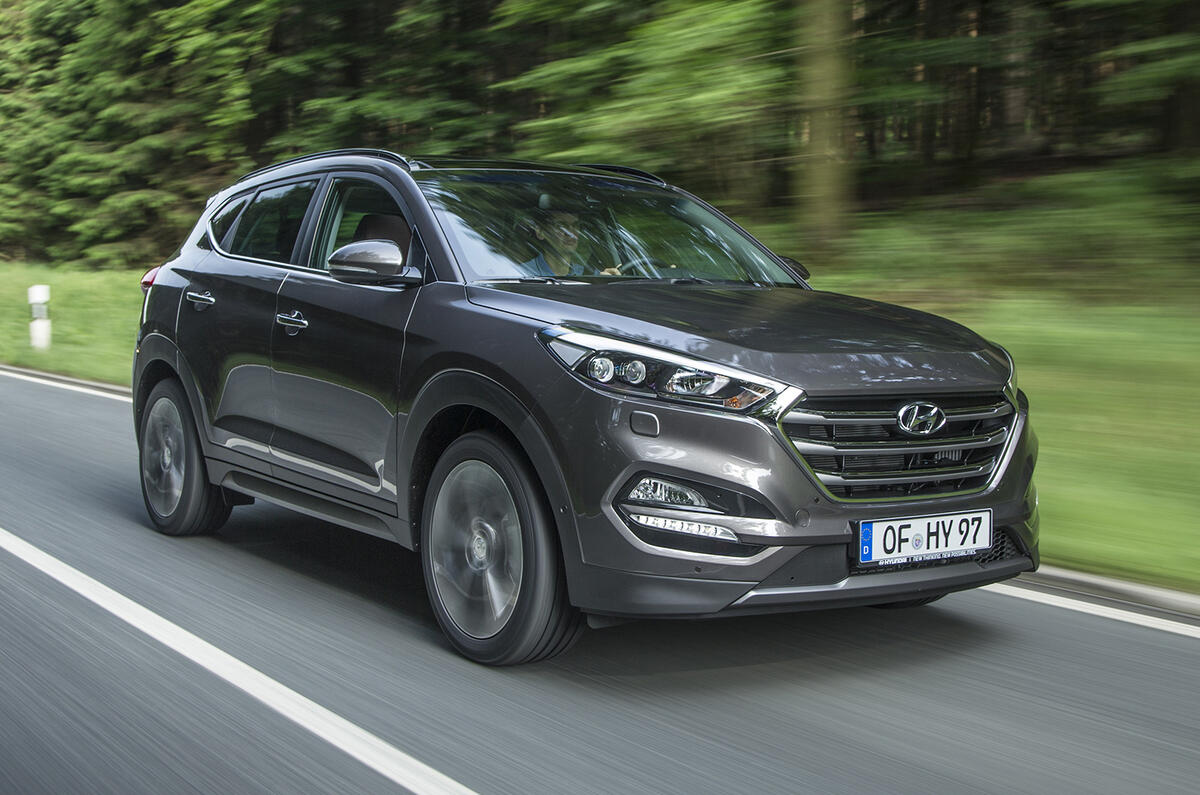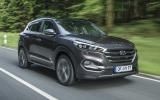What is it?
What’s in a name? For the Tucson a lot, because the decision to ditch ix35 and revert to this moniker was taken to signify that this all-new car represents another leap forward for the brand. Better, they figured, to start afresh than associate with an outgoing car known for being ruggedly decent, but never troubling the class best.
There’s an awful lot riding on its success, too. A rival to the Nissan Qashqai, the Tucson has been crafted to further accelerate Hyundai’s growth by appealing to a new breed of customer, one more influenced by subjective factors such as style and perceived quality than just price and kit lists. Inevitably, those aspirations come at a cost, with prices starting at £18,695 (up from £17,000 now, although that’s not a like-for-like hike) and running up to £32,345.
This is a second phase prototype, described by its makers as 80-90% representative of how the final car will look and feel when it is launched next month. The exterior won’t change, but improvements to the fit, finish and materials of the interior are promised - an impressive claim given the quality evident on our high-spec car.
What's it like?
The combination of a turbocharged 173bhp 1.6-litre petrol engine mated to a seven-speed DCT transmission and four-wheel drive is unlikely to be a volume seller. Nevertheless, the powertrain and gearbox are smooth and eager. The only frustration is that it holds gears a fraction too long and that engine noise becomes intrusive even at 2500rpm. Otherwise, refinement is impressive: wind and road noise are almost non-existent.
The Tucson rides and handles well, too. Despite being in excess of 1500kg in this guise, on the smoother-than-UK test roads we encountered in Germany the Tucson performed keenly, riding flatly and resisting body roll with aplomb. The suspension, Macpherson strut at the front and multi-link at the rear, feels a smidgen over-firm, but the upside is impressive control. It’s just a shame that the steering offers so little feel.
With a steering wheel that adjusts for reach and rake and large degrees of seat adjustment, it’s easy to get a good driving position in the fine-looking cabin. There’s good space, too, with room for five adults, including two six-footers sitting line astern. Cubbies and storage areas abound, and boot space is impressive - weighing in at more than the Qashqai’s seats up, and slightly less with the seats down.
The kit and technology on offer is also up there with the best, although what comes as standard hasn't been finalised yet. The highlight is a new sat-nav system said to be three times faster than the outgoing one, but autonomous braking, ventilated and heated seats, park assist and more also demonstrate Hyundai’s commitment to bringing premium car technology to a wider audience, as Nissan and Ford have done.
Should I buy one?
So far, so very good. Hyundai has sprinted to its position today as a credible mass market car maker by building laudable, if slightly uninspiring, cars and pricing and speccing them keenly.
The Tucson is different, adding visual, material quality and (steering aside) dynamic appeal, potentially putting it among the class best. However, in such an ultra-competitive class it would require a leap of faith to decalre it capable of going toe-to-toe with the Qashqai until we've driven and assessed a more representative UK market car on our own roads.











































Join the debate
Add your comment
Looks Great!
hope the head restraints are not those of the ix35
Ok, but performance?